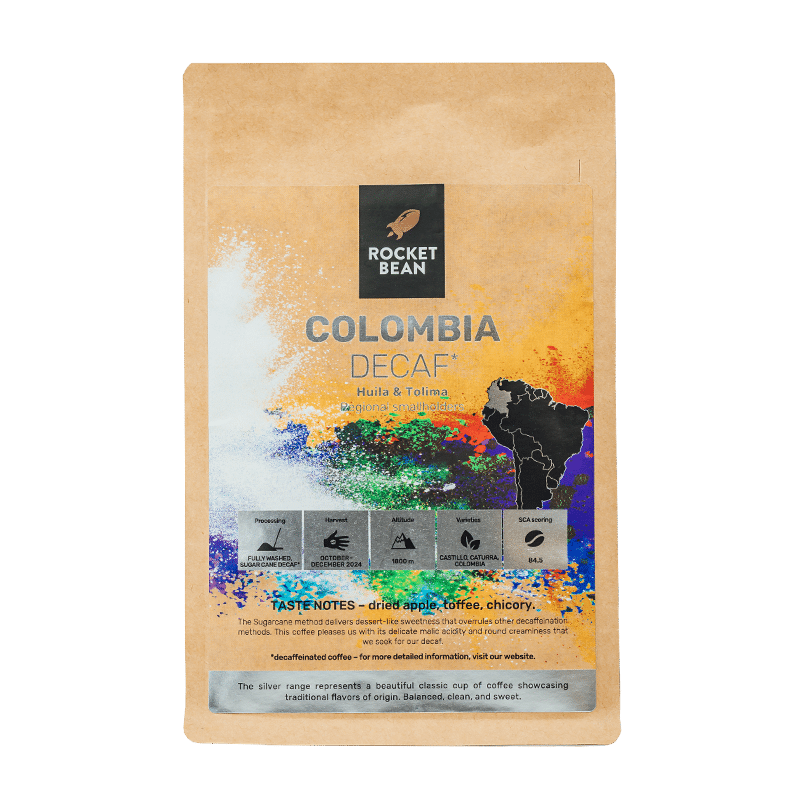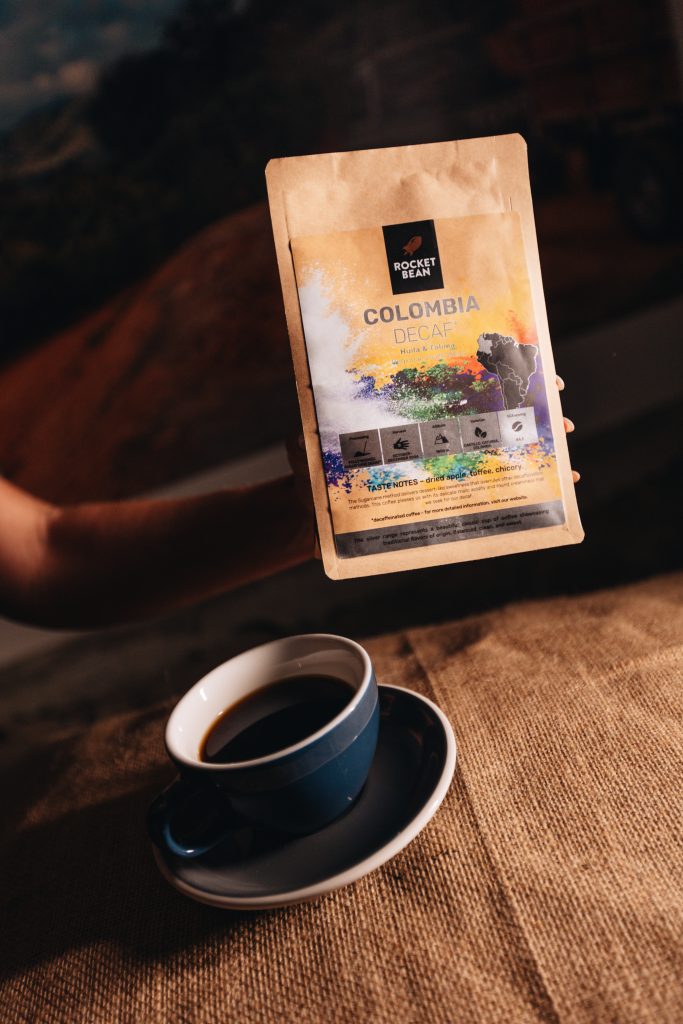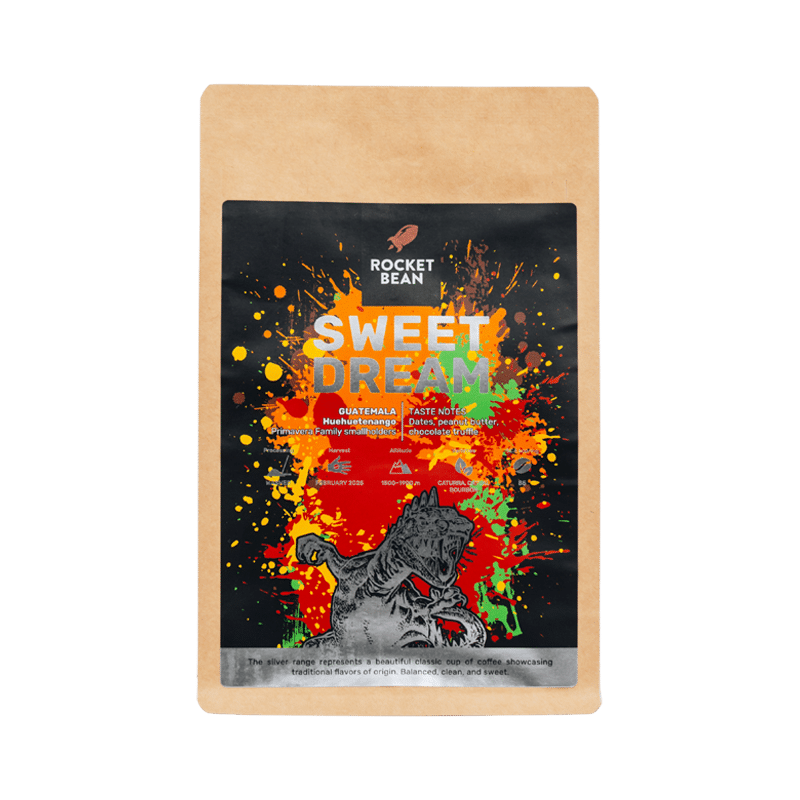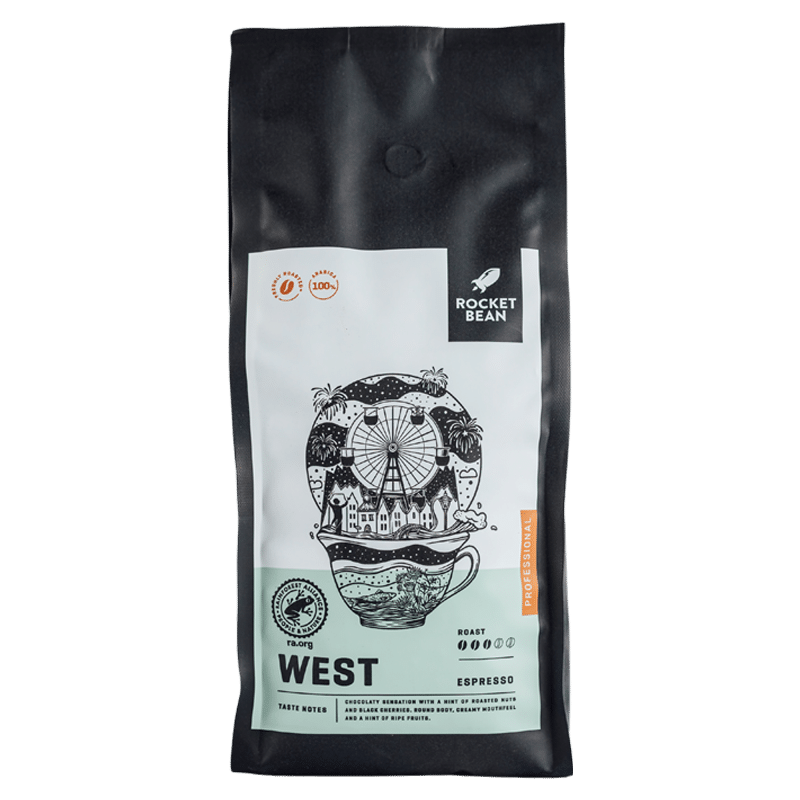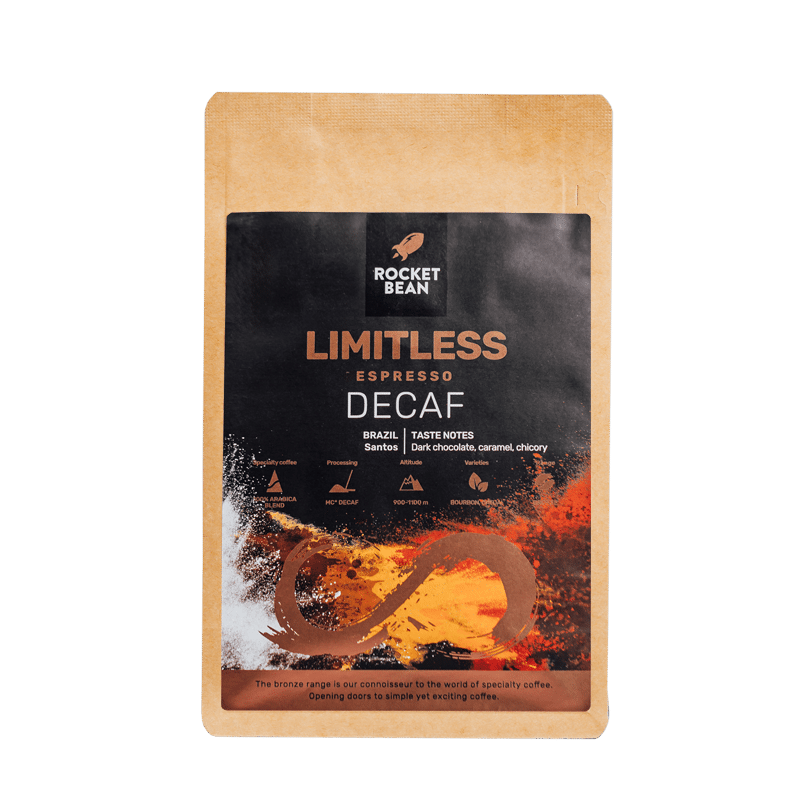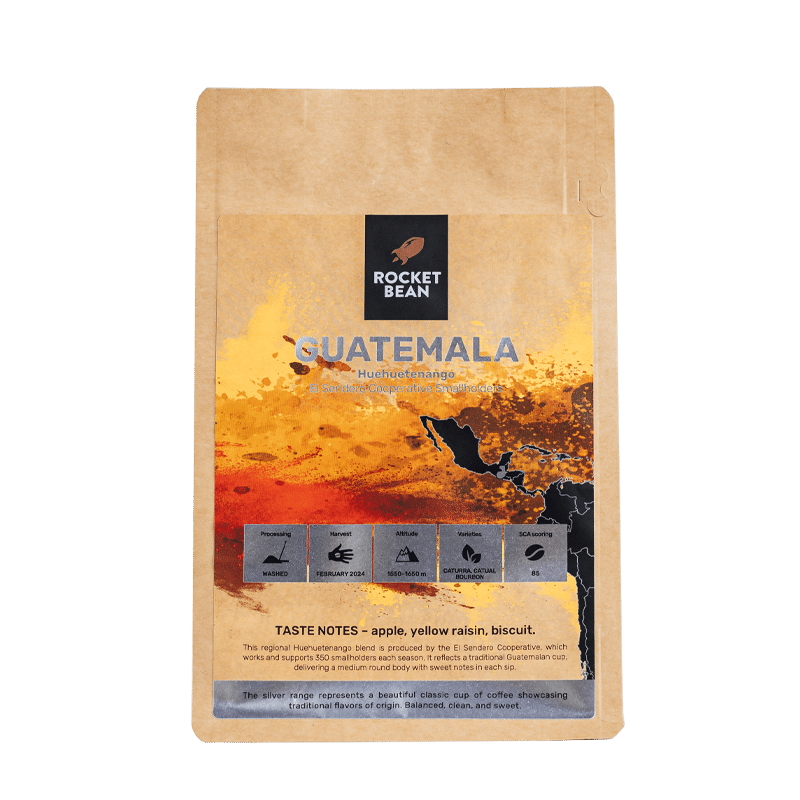Colombia | Sugarcane DECAF, Washed
Filter
- Country: Colombia
- Region: Huila & Tolima
- Producers: Regional smallholders
- Taste and Arome: Dried apples, toffee, chicory
15,00 €
Processing
Fully washed Sugarcane decaf*
Harvest
October - December 2024
Altitude
1800 m
Variety
Castillo, Caturra, Colombia
Scoring
84.5
The Sugarcane method delivers dessert-like sweetness that overrules other decaffeination methods. This coffee pleases us with its delicate malic acidity and round creaminess that we seek for our decaf.
Colombian Regions
Huila Region
Nestled between the Eastern and Central mountain ranges, the Huila region of Colombia is an idyllic haven for coffee cultivation. The region’s daily temperatures gently swing between 13 and 22 degrees Celsius, and coffee trees flourish at elevations ranging from 1,200 to 1,800 meters above sea level. The soil is enriched by the Nevado del Huila volcano, which has packed it with volcanic minerals, providing essential nutrients and water drainage for the coffee plants. The Huila region is also a biodiversity hotspot, with landscapes ranging from high-altitude páramos to lush tropical rainforests. This diversity supports a rich array of plant and animal species. The Magdalena River, Colombia’s main waterway, begins its journey here, providing crucial irrigation and water resources for agriculture and daily life. Beyond coffee, Huila’s fertile lands yield rice, corn, sugarcane, and various fruits while supporting cattle ranching and dairy farming. The region’s infrastructure is well-developed, with major highways and an expanding road network that facilitates the transport of goods, including coffee, to markets within Colombia and beyond.
Tolima Region
Tolima is a department in west-central Colombia that nestles between the Andean mountains and the Magdalena River basin. The name of the region comes from the native indigenous tribe, Pijao. In their language, the word ”Tolima” means – snowed due to the snow-covered peaks of the Andes from southwest to northwest Tolima.
The terroir of this region benefits from Andean mountain volcanic soil and enriched ice-spring waters. Besides that, a significant role in water circulation takes the proximity of the equatorial climate and the large Magdalena River basin, which is home to many species that are distinct only to this region.
Because of the region’s terroir benefits, it is the 3rd producer of Colombian coffee among all 14 departments of Colombia. It produces approximately 12% of all Colombian coffee.
Varieties
Caturra
This variety was discovered on a plantation in the Minas Gerais state (Brazil) at the beginning of the 20th century. Caturra is a mutation of the Bourbon variety, known as the first naturally occurring coffee variety mutation ever discovered.
It became popular because of its small-sized crops, high yield, and ability to mature coffee cherries faster than other varieties after planting. The specifics of this variety meant that farmers could grow more coffee using less land. Caturra got its name because of its crop size. In the Guarani language, caturra – means small.
In the cup, Caturra reflects a delicate taste profile with bright acidity and a low-to-medium body.
Castillo
Improving and mutating Caturras hybrid variety Variedad Colombia, Colombian agronomists found a variety resistant to leaf rust, CBD (Coffee Berry Disease), and other diseases, still giving a high yield crop. And so, in 2005, FNC introduced farmers of Colombia with Castillo. A project called – Colombia sin Roya (Colombia without Rust) by FNC. This project aimed to recover and renew the production of high-quality coffee in Colombia.
Nowadays, Castillo is the most commonly grown coffee plant in Colombia, mostly because of its plant benefits, taste profiles, and subsidized seed pricing for farmers.
Colombia
Despite the superior production results of the Caturra variety, it is quite susceptible to coffee leaf rust, which has always been a threat to coffee growers worldwide. Plenty of leaf-rust resistant hybrids have been created (and still are!) specifically for many countries, regions, and even farms. One of them is the Colombia variety, also known as Variedad Colombia.
The Colombia variety is a cross between Timor and the previously mentioned Caturra variety. This hybrid resulted in a coffee plant with high productivity and more resistance to leaf rust than its parental varieties, Caturra and was introduced by FNC in the 1980s.
Variedad Colombia can give us classic caramel and chocolate notes with stone fruit sweetness in a full-bodied drink
Sugarcane decaffeination process
The Colombian sugarcane decaffeination method is our favorite for many reasons, blissful taste notes and extra sweetness being just two of them. The main ingredient of this method – ethyl acetate (E.A.) is an organic compound naturally found in fruit juices, cereals, and sugarcane.
This process begins with the fermentation of molasses derived from sugarcane to create ethanol. Ethanol is an alcohol that is afterwards mixed with acetic acid (the main component of vinegar) to generate the E.A., which is then used in the decaffeination process.
Before the decaffeination process itself, regional smallholders bring their freshly picked coffee cherries to the washing station. After the mechanized de-pulping process, coffee beans are washed in fresh, clean water. Then they go through the decaffeination process, which goes by these steps:
- Green coffee beans are steamed for about 30 minutes before the decaffeination to unlock their pores, allowing caffeine extraction.
- Afterwards, coffee is placed in a solution of water and Ethyl Acetate (E.A.), a naturally occurring compound and solvent derived through the fermentation of sugarcane.
- Green coffee is submerged in the solvent, which naturally bonds to the salts of chlorogenic acids within the coffee, allowing the extraction of caffeine.
- Once the coffee is saturated, the tank is drained, and a fresh solution is added. This process continues for approximately 8 hours.
- After the last remaining caffeine is gone, the coffee is removed from the solution and prepped for another steaming.
- The final, low pressure steaming removes the remaining traces of E.A. Decaffeinated coffee is then dried, physically polished to ensure cleanliness, packed and ready for export.
